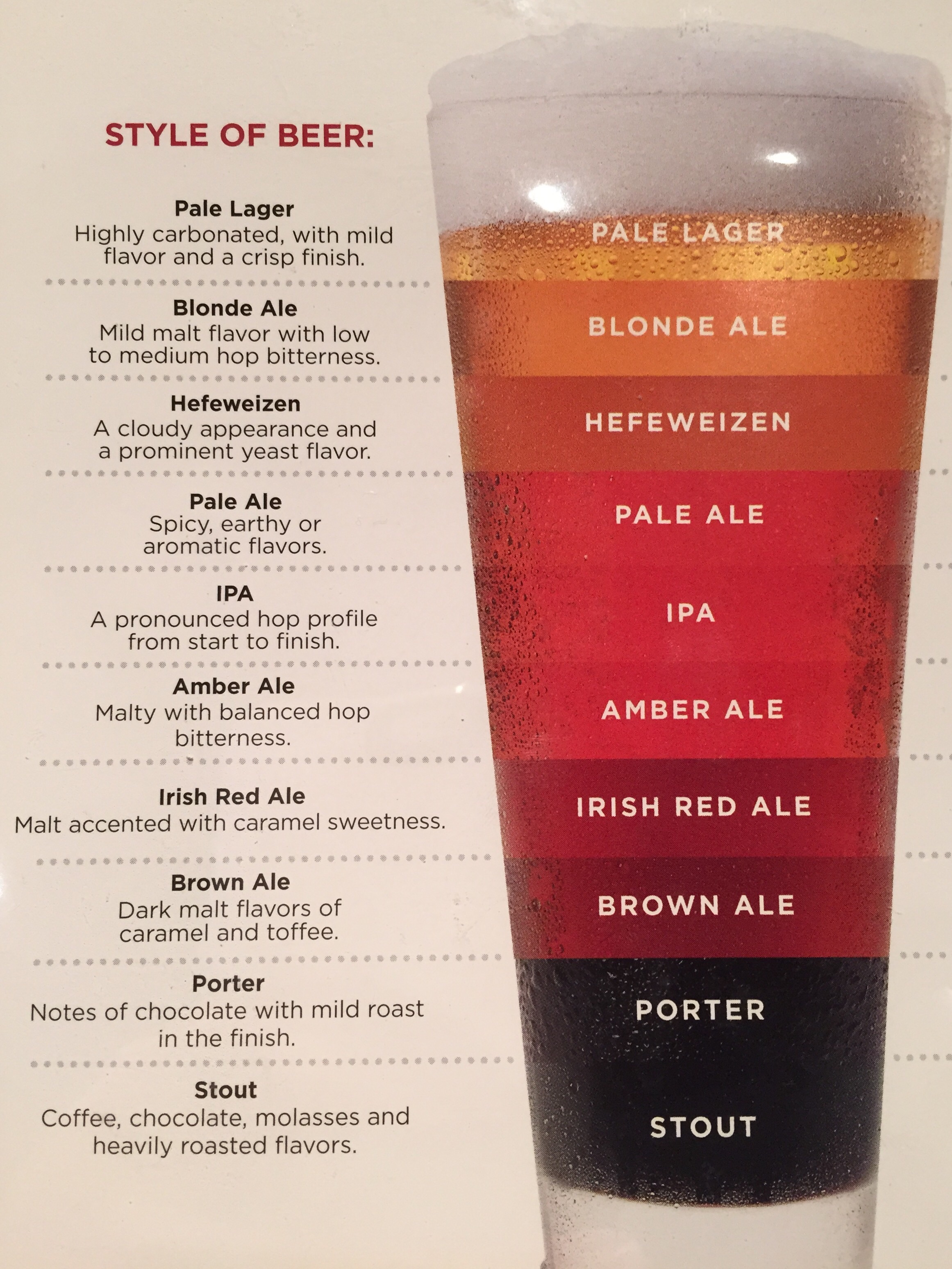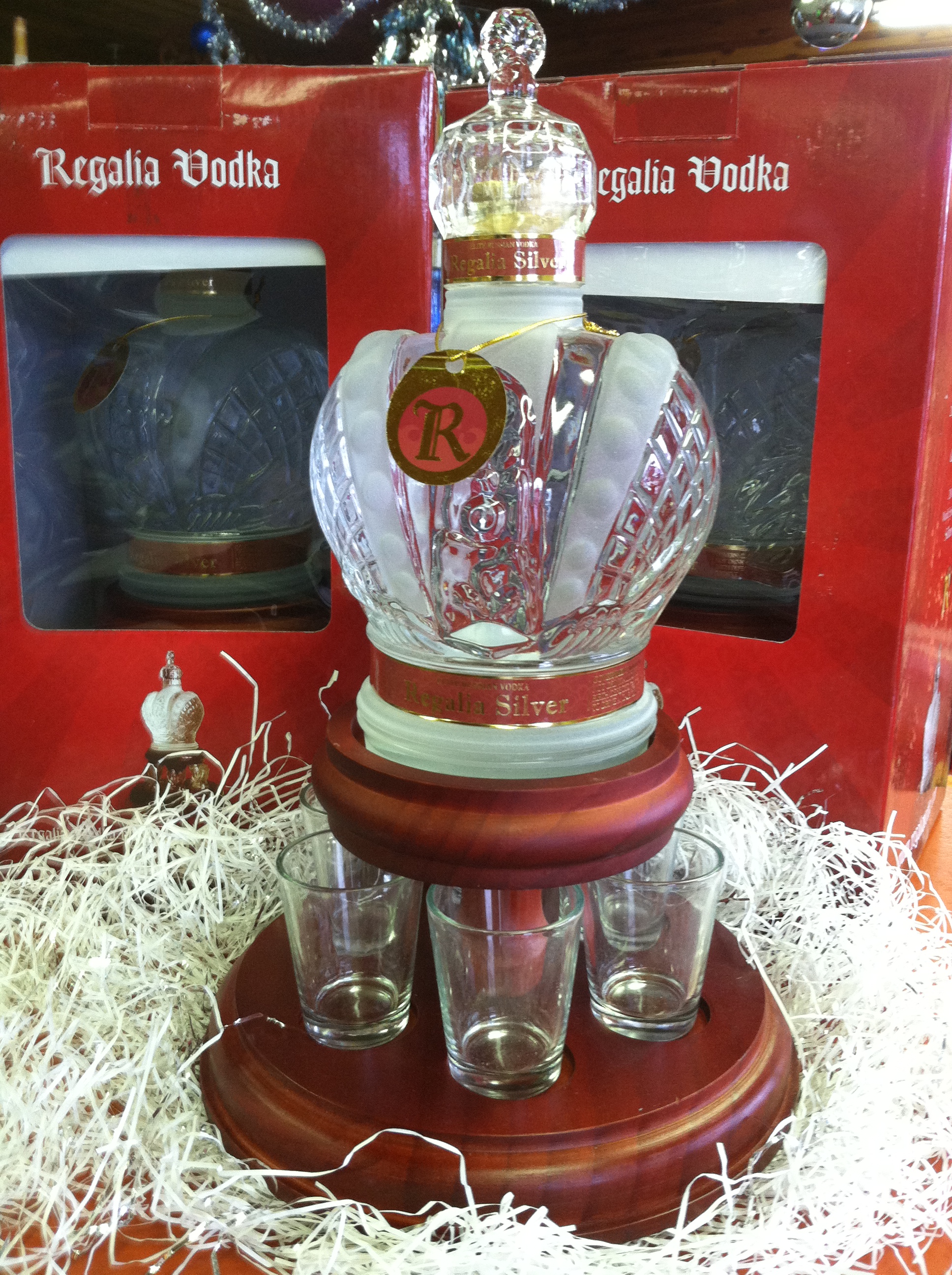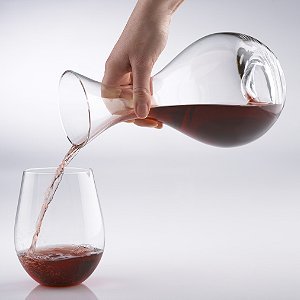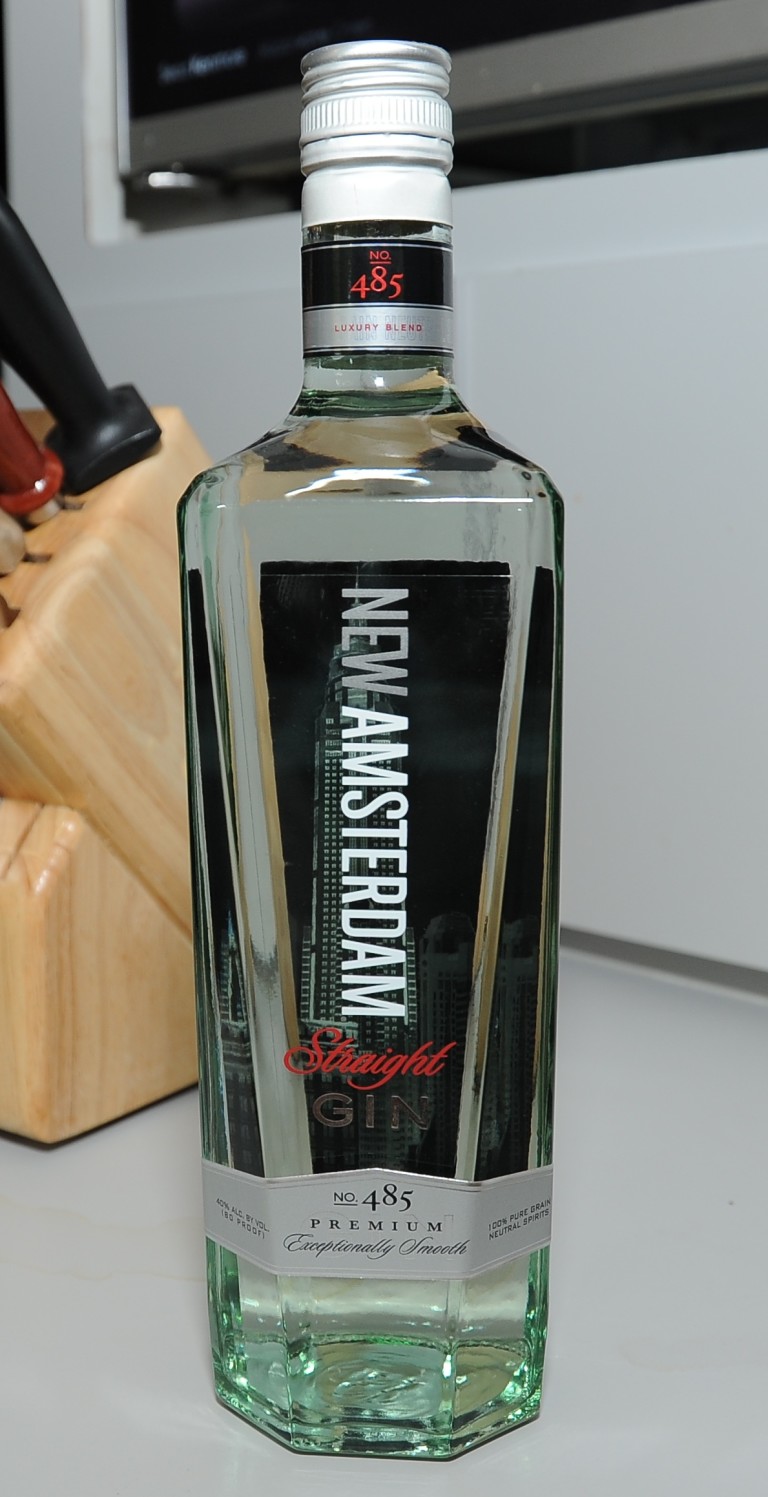Drink Responsibly (ie 0-2 drinks/day). Prices are formatted 750ML/1.5L (regular bottle vs a Magnum).
The world of wine goes deep. Please refer to CultureCustoms’ Wine Guide for a guide on tasting and wine varieties and see below recommended specific wines.
Recommended Books
Best for Beginners: Kevin Zraly Windows on the World Complete Wine Course: Revised & Updated / 35th Edition by Kevin Zraly [Amazon]
Best Professional Reference Books:
- The World Atlas of Wine by Hugh Johnson [Amazon]
- The Wine Bible, 3rd Edition by Karen MacNeil [Amazon]
- Oxford Companion to Wine by Jancis Robinson [Amazon]
Note: Be sure to get the latest editions to capture the latest wine trends.
Best Wine Novel: Adventures on the Wine Route by Kermit Lynch [Amazon]
Recommended Glassware
A more budget glass is the Gabriel-Glas “StandArt” which is about 32$ each. Don’t think it’s worth to get the more expensive GGG (Gabriel-Glas Gold Edition).
The best high-end glassware at $50+ each is the Grassl 1855 (slightly better than the Grassl Cru, don’t get Liberte as its not large enough for big reds) and possibly Grassl Mineralite (best riesling glass). Better than the Riedel Sommelier series, Schott Zwiesel, Zalto, or Josephine #3 (Zalto Design, ugly, similar to Riedel wing series). Grassl is slightly thicker and more sturdy than Zalto, more narrow opening also so it’s better for smelling the aromatics. Sensory Glass might be a good alternative but hard to find.
Decanting – In the past, decanting was crucial to remove the grainy sediment. Nowadays, sediment is filtered out of wine. We recommend Double Decanting for younger wines (especially for expensive bottles, decant for 5-6 hours prior to drinking) because it will open up the wine and break apart the tannins – you get a lot more flavor, approachability (less bitter, less alcoholic, less off-smells or flavors), and complexity. This includes (1) pouring the wine into a decanter (any pitcher will do) and making sure not to pour any sediment at the last drops (with or without use of a candle) (2) pouring the wine back into the bottle using a funnel. Drinking without decanting is akin to dining at a fancy restaurant and eating the food when it’s cold, or walking out of a sports game 3/4 in when it’s getting good – you’re just not getting what you’re paying for.
Recommended Wines by Price
We love using Vivino to find best value wines. A rating of 3.8-3.9 at $15-20 is a great deal. A good rule of thumb is to not pay more than ~$60 for a bottle of wine, as it’s harder to taste the difference in price over $50. But don’t pay too little. At $25+, wines start to be hand-crafted rather than mass-produced, so they tend to have more of a story to them (both literally and in taste profile). Up to 50-60 bucks you’re paying for usage of better grapes, from a better location, better winemaking or better grapes from a better location. More than that you’re paying premium for the brand and demand. Additionally, $30 wine today tastes as good as $60-80 wines a decade ago due to technological advances and increased global competition. Also note that old wine is not necessarily better, as the vast amount (98%) of fantastic wines are meant to be consumed within 3-5 years after bottling.
Best Budget Red Wine (~$5/bottle)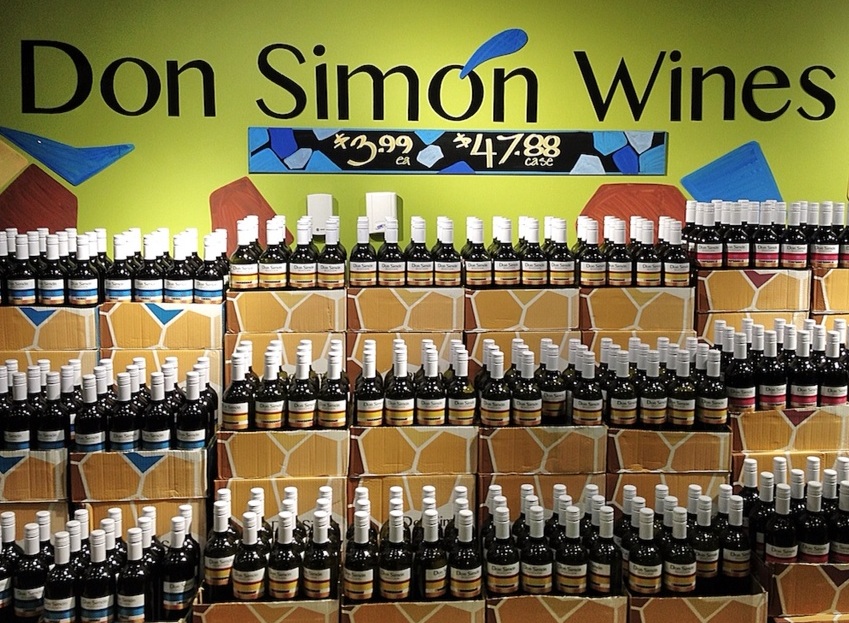
Whole Foods wine: One of the best values in red wine is Don Simon Tempranillo $4 found at Whole Foods (better than the Shiraz). Better than the cheaper Whole Foods wine (Three Wishes $3) and Trader Joe’s Charles Shaw aka Two Buck Chuck (which is lately $3 Three Buck Chuck). Claims to be the most sold wine in Spain.
Substitutes: Found at Aldi’s $3 – Winking Owl Shiraz (better than the Merlot and Cabernet Sauvignon)
Other Good Values:
Citra Sangiovese $7/1.5L
Columbia Crest Merlot/Cab $9/1.5L
Ruffino Chianti (Sangiovese) $7
Meridian Cab Sauvignon or Merlot $6
Jacob’s Creek $6
Just Okay: Yellow Tail Cabernet Sauvignon (light and lively) and Yellow Tail Shiraz (more full-bodied), Jacob’s Creek Shiraz $8, Barefoot Cabernet Sauvignon, Trader Joe’s Moon Wine (different lines, $6), Carlo Rossi Burgundy $15/4L (Very sweet but cheap)
Not Good: Three Wishes, Trader Joe’s Charles Shaw aka Two Buck Chuck, Blackstone Pinot Noir, Alamos Malbec, Barefoot (Shiraz, Merlot, Zinfandel, Pinot Noir, Red Moscato, Sweet Red), Yellow Tail (Malbec, Pinot Noir, Pinot-Shiraz Blend, Merlot), Arbor Mist
Best Budget White Wine $3-$7
Whole Foods wine: One of the best values in white wine is Don Simon Chardonnay $4 found at Whole Foods. Better than the cheaper Whole Foods wine (Three Wishes $3) and Trader Joe’s Charles Shaw Two Buck Chuck (which is lately $3 Three Buck Chuck).
Substitutes: found at Aldi’s – Winking Owl Pinot Grigio $4 (better than the Chardonnay and White Zinfandel), and if you like sweet the Winking Owl Moscato is great – but like all Moscato is weaker at 8% ABV (similar flavor compared to $15 bottles of Moscato i.e. Bartenura blue bottle)
Other Good Values:
Vinho Verde $7 (Portugal, varied brands)
Barefoot Pinot Grigio
Yellow Tail Moscato (very sweet) and Yellow Tail Sauvignon Blanc (light and crisp) and Riesling (fuller-bodied)
Just Okay: Barefoot Sauvignon Blanc, Trader Joe’s Moon Wine (different lines, $6)
Not Good: Barefoot (Riesling, Chardonnay, White Zinfandel, Moscato, all too sweet), Arbor Mist
Best Fine Red Wines ~$20/bottle
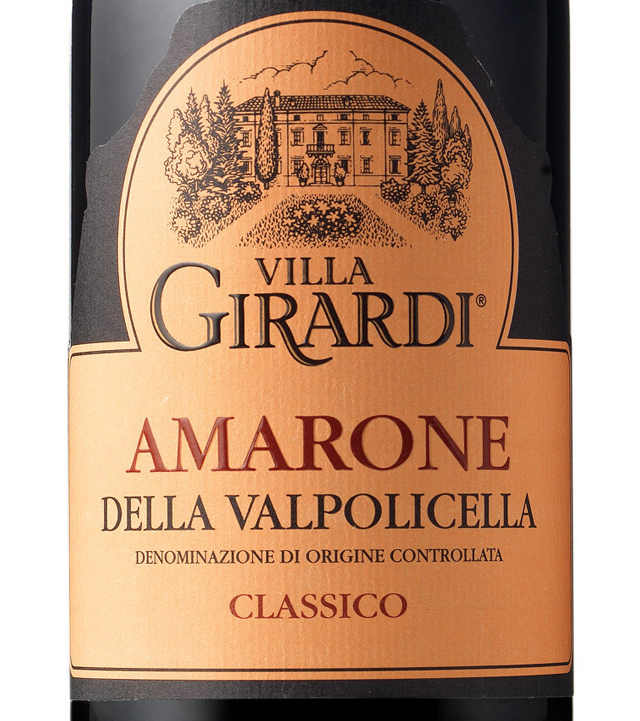
Value Red Wines
The Sommelier’s Palate Pick – a Beaujolais – i.e. Jacky Janodet $20. Why are Beaujolais value picks? Because the region is right next to Burgundy! Get a $30 bottle of Beaujolais that equates to a bottle of Burgundy in the hundreds.
For the best flavor (fruity / full bodied / AND great bitterness), ask the guy in the wine store for a good Ripasso. Ripasso is the best mid value point between a Valpolicella (Italian) and the more expensive Amarone. Italy is known to be the best out of wines such that people can most easily tell from smelling/tasting it that it is from Italy. Valpolicella – example Bussola Ca’ del Laito Valpolicella Ripasso Superiore $25
Hobnob Pinot Noir $10 (more of a bitter dark fruit taste)
Best Fine White Wines
The Sommelier’s Palate Pick – a Riesling – Budget – St. Urbans-Hof $10, or Dr. Loosen $10. Value – Karthäuserhof $20. Riesling is a sommelier favorite because Riesling exceeds expectations in all aspects – Sommeliers have a love affair with it because it is crisp, high acid, mineral, and importantly doesn’t fatigue your palate but refreshes it.
Muscadet is another great French value, like Beaujolais it is $15 with a prime location’s soil (Loire Valley). It is made in the western side of the Loire valley and is a great alternative to California Sauvignon Blanc and Pinot Gris.
Other Recommends – Kim Crawford Sauvignon Blanc $15
Ferrari-Carano Siena $20
Hard to find / Expensive: Patz & Hall (Pinot Noir) $60
Best Value Champagne or Sparkling Wine
Note: Champagne’s sweetness is varied by the amount of sugar added after the second fermentation, this determines how sweet a Champagne will be. The label indicates the level of sweetness: Extra-Burt/Brut-Naturale (0-6g sugar/liter – unsweetened/driest), Brut (<12g, typical champagne with no sweetness), Extra-Dry (12-20g, still dry but slightly sweet), Sec (17-35g, medium-sweet), Demi-Sec (33-35g, sweet), Doux (>55, sweetest, dessert wine)
Extra Dry (slightly sweeter) is recommended for straight drinking, Brut (dry) is better for mixing (ie in a mimosa the Orange Juice will be the only source of sweetness), while Spumante (very sweet) is generally not recommended for partying except for dessert, as it is super sweet and probably hangover-inducing.
Budget American Sparkling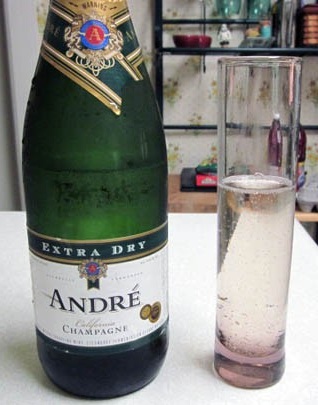
Best Budget Value: Ballatore Gran Spumante $8
Secondary – Yellow Tail Bubbles $10 Sparkling White (better than the Rosé, sweeter than standard brut Prosecco or Cava)
The cheap and not great – Andre Extra Dry is actually better tasting than other affordable sparkling American “Champagnes” $6/750ml
Cook’s Extra Dry (sweeter than brut) $7/750ml – if you’d rather not be judged for bringing college-level Andre (but less flavorful than Andre)
Freixenet $12 (good but this brand tends to run drier / bitter and is not super tasty)
Mid-Level Sparkling (Non-Champagne):
Recommended: Best Values – Gruet Blanc de Noirs $16 (from New Mexico), or better if available – Lucien Albrecht Brut Rose (better than Brut) $18 – this Cremant from Alsace is a great value
or Chloe Prosecco $12
Others –
Mumm Napa (Cuvee M) $20 which is fantastic and affordable (peaches n cream style, but not too sweet or dry)
Roederer Estate $22 is better than
Gloria Ferrer (Blanc De Noirs) $22
A slight step up: Anything from Schramsberg $34
Don’t get: Gloria Ferrer Sonoma Brut (Roederer and Gloria Blanc De Noirs are better), Costco Kirkland Champagne (not complex for $20), J. Roget and Korbel are both gross, The mass produced Champagnes (not worth it): Moet & Chandon and Veuve Cliquot, Proseccos (a value but not that great): La Marca $13 > Kirkland > Mionetta > Ruffino > Lunetta
For how to Store, Serve, and Drink Wine, and Wine Accessories, see “Professional and Consumer Barware”
Best Beer
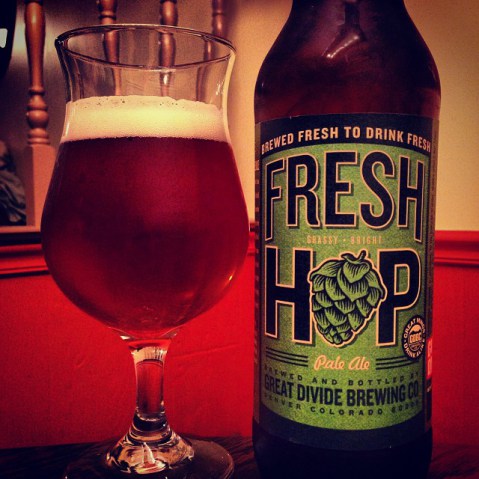
Value Beer: To graduate from the Miller Light or Bud Light (or even the dreaded Natural Light, Coors Light, and Milwaukee’s Best/Beast), spend a little extra for the smoother Yuengling, Samuel Adams. Hwoever, to start drinking real beer, a Good Beginner “Beer-Drinker” beer (~$10/6pack) is the Sierra Nevada Pale Ale (IPA – Indian Pale Ale Style)
Best Seasonal Beers: Troeg’s Nugget Nectar (in Spring, February, but only in Northeast America), Great Divide’s Fresh Hop Pale Ale (variation in freshness, my favorite, buy when first available, Oct-Dec), Sierra Nevada Celebration (in Winter), Corsendonk’s Christmas Ale (Winter, not a 6-pack it’s a wine bottle), Stone Brewing’s Vertical Epic (chili ale, great mix of sweet/smokey, good if you like sweet)
Best Year-Round Beers (~$14/6pack): Dogfish Head’s 90 Minute IPA, Ballast Point Sculpin IPA, Bell’s Hopslam. If you can’t find those three, try: Stone Brewing’s Arrogant Bastard, 21st Amendment IPA, Founder’s IPA
Best Hoppiest Beer: Moylan’s Hopsicle Triple IPA (this is a facemelter)
Best Stout Bar-none: Founder’s Breakfast Stout
Note: Americans tend to drink beer at their refrigerator temp of 37 degrees (cold) or even ice cold (ie chilled) due to the proliferation of the concept that colder is better. However, the colder a beer gets the less you actually taste it. This has been clever indoctrination by bigger breweries to pass off less flavorful beers. In Europe, especially Britain, beers can be served cool or cold, more like 50 degrees, and warm up to lukewarm or room temperature, and there’s nothing wrong with it. However, Lager beers (light beers) and Guinness are always served cold, while ales are recommended to be served cool.
Miscellaneous
Best Hard Cider
Best Hard Cider but expensive/hard-to-find: Strongbow, Crispin
Best Value Popular Hard Cider: Angry Orchard (better than the sweeter Woodchuck)
Best Mead
For traditional mead (non-fruity), get B. Nektar Bourbon Barrel or B. Nektar Vanilla Cinnamon
(better than Chaucer (honey+spice added to wine so not real), Bunratty (honey+spice added to wine so not real), Redstone, Lurgashall, or Carroll’s
Use http://www.ratebeer.com/findbeer.asp
